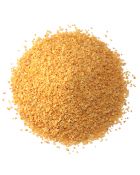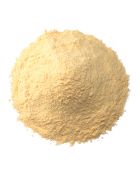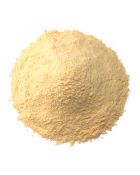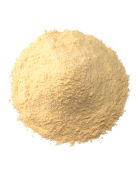Spices in Tea
Spices in Tea


August 9, 2021
We’re looking at spices in the kettle, beyond the tradition of currant scones at half-past-four. Spice Tea exists in a space that merges history and ancient medicinal practices. Below, we highlight the most famous spiced tea combos and take mugshots (pun intended) of individual spices as main ingredients.
Complimentary Flavors
Tea is a beverage made by steeping the leaves of subtropical evergreens from the Camellia sinensis family. Spices are often mixed in with dried tea leaves, like in Chai, but some teas omit leaves altogether highlighting the interplay of multiple spices. Chai’s characteristic flavor comes from steeping a combination of spices like cinnamon, peppercorns, allspice, cloves, cardamon, and star anise before adding milk and black teas like Ceylon or English Breakfast. Indian families often have their own recipes for the very similar Masala Chai. Instead of Ceylon, Masala Chai is often made with an Assam or Darjeeling tea and whole milk. The spice list remains the same, but instead often uses whole cardamon pods and adds ginger. Made without tea leaves, Golden Milk Tea consists of turmeric, ginger, pepper corns and cinnamon. The bright yellow-orange drink is sweet and spiced, and its milky base is perfect as days grow colder.
Steeped in History
Ayurvedic and Eastern medicines have a long history of using spices as stand-alone decoctions. Scientific research has been conducted to determine the health benefits of spices, but few definitive conclusions can be drawn. For now, their benefits rely on anecdotal histories. Be forewarned – while the occasional cup of pepper or cinnamon tea is soothing, research has determined that long-term exposure to high volumes of some spice compounds may be harmful. As with many tasty treats, a little can go a long way, so drink in moderation.
Ginger
Popular into the modern age thanks to its approachable flavor and drinkability, ginger tea is a fixture during the winter. The phytonutrient that provides its biting heat, gingerol1,2, is related to capsaicin and piperine—the alkaloids found in pepper corns and chilies. Often used to treat nausea and settle upset stomachs, ginger is believed to be an anti-inflammatory, an antioxidant and to possess antimicrobial properties.
Turmeric
Knobby orange turmeric contains flavonoids beta-carotene and curcumin3, which are known antioxidants and may reduce inflammation. Even though it has potential benefits like immune-system and metabolism regulation4, these benefits aren’t accessible to us when eating or drinking turmeric because curcumin is not easily absorbed into the body. It needs a partner, like pepper, to increase its bioavailability. As a tea, turmeric’s musky flavor pairs well with ginger and citrus.
Cinnamon
Few spices immediately transport us in time and space than cinnamon. The compound responsible for the sensory adventure, cinnamaldehyde, is believed to have antibacterial, antifungal, antioxidant and anti-inflammatory properties. Some studies suggest the compound may lower blood pressure and reduce LDL “bad” cholesterol. Cinnamaldehyde may be toxic in large quantities5, so keep regular consumption to 1 teaspoon or less. A 10 minute steep of cinnamon dressed with honey is a delightful way to wake up on a cold morning or to beat a mid-afternoon slump without the help of caffeine.
Black Pepper
Black pepper tea was historically used as a cough suppressant, and that may be because of the compound piperine’s proven anti-inflammatory properties.6 Pepper may also improve digestion, relieve bloating, and may also act as an antioxidant. While a black pepper tea alone may not sound the most appetizing, pepper increases the bioavailability of other nutrients, making them easier to absorb into our bodies. To increase appeal of pepper tea, pair with ginger, honey and lemon juice—but drink it in moderation.7
Steep something spicier as the weather starts to cool. You may reap untold benefits – even if it’s just a mood boost found in a warm mug. Visit our online store to stock up on high quality, sustainably sourced spices.
Sources
- National Center for Biotechnology Information. "PubChem Compound Summary for CID 442793, Gingerol" PubChem, https://pubchem.ncbi.nlm.nih.gov/compound/Gingerol. Accessed 5 August, 2021.
- "Notified Classification and Labelling According to CLP Criteria.” C&L Inventory, European Chemicals Agency, echa.europa.eu/information-on-chemicals/cl-inventory-database/-/discli/notification-details/123236/801577. Accessed 5 August, 2021.
- Stohs, Sidney J et al. “Highly Bioavailable Forms of Curcumin and Promising Avenues for Curcumin-Based Research and Application: A Review.” Molecules (Basel, Switzerland) vol. 25,6 1397. 19 Mar. 2020, doi:10.3390/molecules25061397
- National Center for Biotechnology Information. "PubChem Annotation Record for CURCUMIN, Source: Hazardous Substances Data Bank (HSDB)" PubChem, https://pubchem.ncbi.nlm.nih.gov/source/hsdb/4334#section=Human-Toxicity-Excerpts-(Complete)Accessed 5 August, 2021
- National Center for Biotechnology Information. "PubChem Annotation Record for CINNAMALDEHYDE, Source: Hazardous Substances Data Bank (HSDB)" PubChem, https://pubchem.ncbi.nlm.nih.gov/source/hsdb/209#section=Human-Toxicity-Excerpts-(Complete). Accessed 5 August, 2021
- Bang, Jun Soo et al. “Anti-inflammatory and antiarthritic effects of piperine in human interleukin 1beta-stimulated fibroblast-like synoviocytes and in rat arthritis models.” Arthritis research & therapy vol. 11,2 (2009): R49. doi:10.1186/ar2662
- National Center for Biotechnology Information. "PubChem Compound Summary for CID 638024, Piperine" PubChem, https://pubchem.ncbi.nlm.nih.gov/compound/Piperine. Accessed 5 August, 2021.




